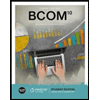
Case summary:JH’s husband who was twenty years old died of cancer. She has a pending medical bill of $50,000 from her husband, a mortgage payment of $1500 and, other debts. She has been working in a library for ten years earning $1500 per month and receives $1500 in social security, and $1100 in life insurance after her husband's death. She has to clear the dues and there is hardly any money left for groceries. JH decides to file for chapter 7 bankruptcy.
To find: The time JH has to submit the required schedule after filing the application of Bankruptcy.
Want to see the full answer?
Check out a sample textbook solution
Chapter 15 Solutions
MindTap Business Law, 1 term (6 months) Printed Access Card for Cross/Miller's The Legal Environment of Business: Text and Cases, 10th (MindTap Course List)
- Each unit of L-Z20 would be assigned overhead ofarrow_forwardWhat is the company's gross income....??arrow_forwardAccording to car experts, which of the following ordinarily provides the best value in automobile ownership? Always buying a new car and driving it only a few years. Buying a relatively new used car and driving it for a long time. Buying the cheapest used car available.arrow_forward
- I need help with this general accounting problem using proper accounting guidelines.arrow_forwardHelp this optionarrow_forwardAssume 007 Inc. made sales of $964.4 million during 2016. Cost of goods sold for the year totaled $655.3 million. At the end of 2015, 007 Inc.'s inventories stood at $200.7 million, and the company ended 2016 with inventory of $240 million. Compute 007's gross profit percentage and rate of inventory turnover for 2016.arrow_forward
 BUSN 11 Introduction to Business Student EditionBusinessISBN:9781337407137Author:KellyPublisher:Cengage Learning
BUSN 11 Introduction to Business Student EditionBusinessISBN:9781337407137Author:KellyPublisher:Cengage Learning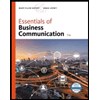 Essentials of Business Communication (MindTap Cou...BusinessISBN:9781337386494Author:Mary Ellen Guffey, Dana LoewyPublisher:Cengage Learning
Essentials of Business Communication (MindTap Cou...BusinessISBN:9781337386494Author:Mary Ellen Guffey, Dana LoewyPublisher:Cengage Learning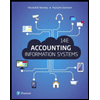 Accounting Information Systems (14th Edition)BusinessISBN:9780134474021Author:Marshall B. Romney, Paul J. SteinbartPublisher:PEARSON
Accounting Information Systems (14th Edition)BusinessISBN:9780134474021Author:Marshall B. Romney, Paul J. SteinbartPublisher:PEARSON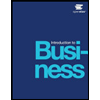
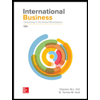 International Business: Competing in the Global M...BusinessISBN:9781259929441Author:Charles W. L. Hill Dr, G. Tomas M. HultPublisher:McGraw-Hill Education
International Business: Competing in the Global M...BusinessISBN:9781259929441Author:Charles W. L. Hill Dr, G. Tomas M. HultPublisher:McGraw-Hill Education